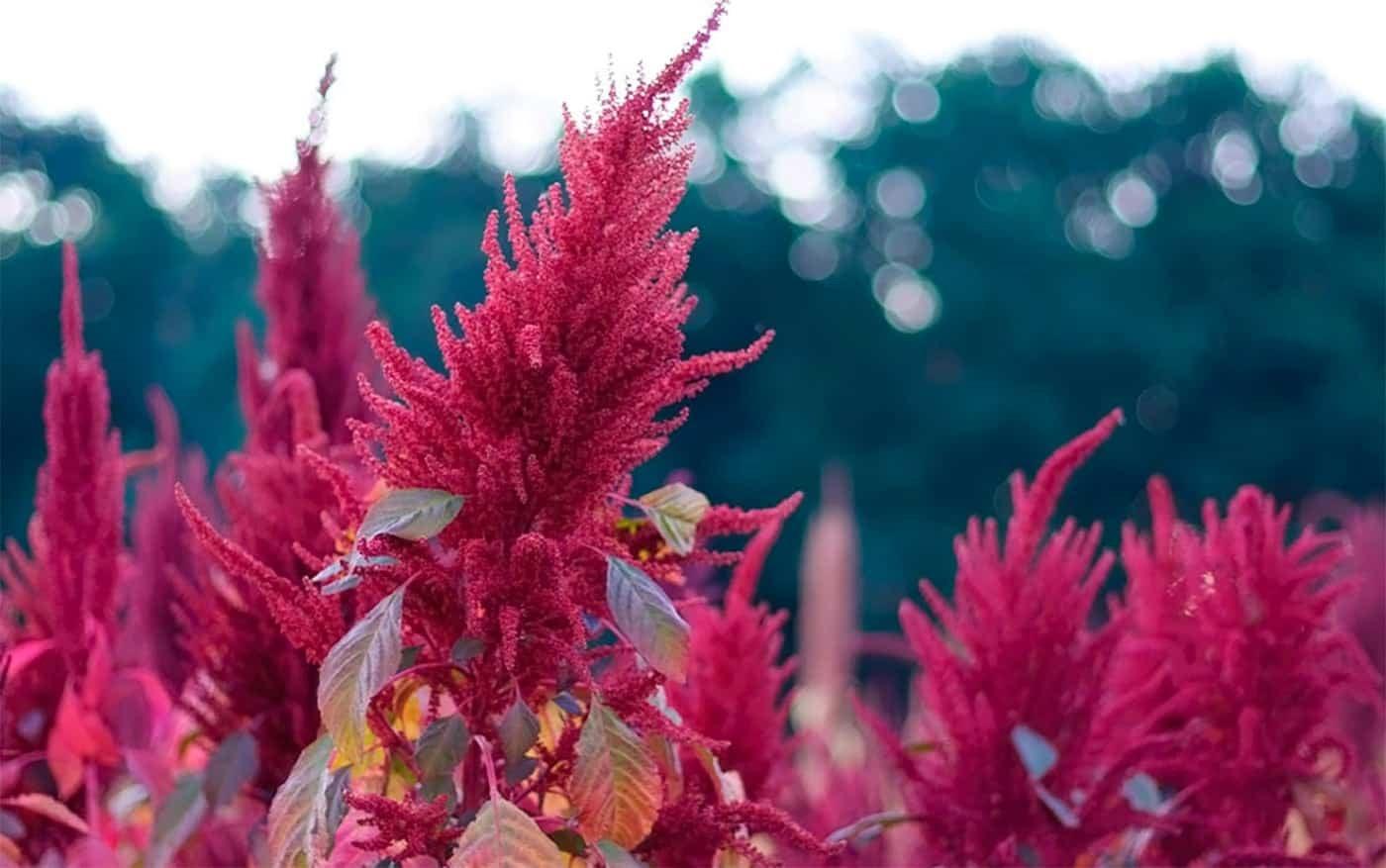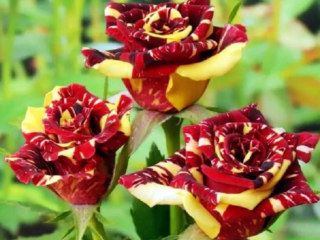Content
Amaranth is an amazing perennial that is widespread in every region of the country. It is a kind of finishing touch that emphasizes the beauty of the garden. The plant prefers sunny areas, so it is better to plant amaranth outdoors. To get bright flowering, you need to know other growing features - when to plant, how to water, what to feed and whether to prune.
Where is amaranth grown?
In the wild, amaranth grows in warm areas, often near stones that protect it from the wind. You can plant the plant near the fence in the country or next to the leeward wall of the house.

Experts advise sowing seeds on the eastern or southern side, since the duration of daylight hours in such areas is higher
The plant is native to South America.From there it was distributed to North America, India, China, and Russia. Some countries were able to become the second full-fledged center for growing amaranth in the world.
Optimal growing conditions
In addition to good lighting, amaranth requires light soil, not too dry, but not swampy. In general, the crop is undemanding to the soil, but to achieve better results it is advisable to plant it in optimal conditions.
Recommended acidity of the medium is 6 points. Amaranth grows well in humus soils. It can be planted in substrates with a large amount of calcium in the composition. This element serves as fertilizer for the roots.
When to plant amaranth in open ground in spring
The culture takes several months to develop, so it should be planted before the onset of cold weather. When determining dates, do not forget about the lunar calendar. Precipitation and climate play a big role.
In this regard, amaranth can be planted:
- In the first half of March - in the southern regions, where the garden soil warms up much earlier.
- In mid-late March they begin to plant in the middle zone and the Moscow region.
- In April - in the northern regions (Siberian and Ural). This is due to the fact that long-sprouted seeds adapt less well to external conditions and remain weakened for several months.
How to plant amaranth seeds in open ground
The plant is suitable for planting in open ground because amaranth seeds have excellent germination. The summer resident only needs to monitor the process. To increase the chances, planting material needs preparation.
Seed selection
Before planting amaranth, you need to know what the seeds of a particular type and variety look like. Most gardeners choose paniculate and tricolor varieties; they grow up to 1.5 m.

If you need a compact flowerbed, it is better to use other, shorter varieties
The seeds are always small in size, but the color differs depending on the type. The light-colored seeds grow into bushes with beige flowers and light green leaves. They have a hard, glossy shell. If you plant dark seeds, a crop with red leaves will grow.
All manufacturers offer to grow amaranth in the country, but preference should be given to sellers with a proven reputation. Even if the company does not have reviews for amaranth, you can rely on gardeners’ ratings for other plants.
It is important to remember to read the date on the packaging. It means the period for collecting seeds and the number of years during which the material will remain viable. It is clear that planting overdue ones is more expensive for yourself. With a high probability, such raw materials will not germinate.
Preparing amaranth seeds for sowing
Seeds do not require special processing if they are purchased. If the material is collected by hand, it is soaked in potassium permanganate. She acts as a disinfectant. 15-20 minutes in a weakly concentrated solution is enough.
Soil preparation
To grow amaranth from seeds in open ground, you will need a certain substrate. There are several options:
- Use store-bought soil (for planting in flower beds).It is sterilized and contains the nutrients necessary for seed germination. Acidity is kept at a neutral level.
- Use your own land. If you plant amaranth directly into the soil, it must be fertilized with peat and humus. The soil should be permeable and light.
The soil for planting is prepared in the fall so that the fertilizer can completely dissolve. To do this, dig out the top layer of soil and add organic matter.

In the spring, the procedure is repeated (if the soil is depleted), minerals are also added - nitrogen, potassium and phosphorus
Attention! If you plant amaranth for culinary purposes, do not use nitrogen-containing fertilizers. Over time, the mineral turns into dangerous nitrate.
Sowing seeds
The technology for growing amaranth is extremely simple. First, the soil where the plant is planned to be planted is watered abundantly. After this, small (1.5 cm) holes are dug. When planting hedges, maintain a distance of 40 cm between furrows.
Seeds are placed in holes of 3 pieces. immediately, lightly sprinkle with earth, level and compact with hands. After 1.5 weeks, the first results will appear - seedlings will emerge from the soil. If you plant the seeds very tightly, weak shoots will need to be removed.
When a height of 20 cm is reached, amaranth is fertilized with mineral complexes.
Caring for amaranth in open ground
After planting, amaranth, like other plants, requires care. Seedlings are the most vulnerable to external factors, so they need to be protected from heavy rains (canopy), drought (regular watering) and cold weather (shelter).
Watering
Amaranth does not need constant watering. The soil is moistened as the upper layers of the substrate dry - this is 4-5 cm from the top.

The watering can is directed to the root, since in sunny weather water on the leaves often leads to burns
Fertilizer
Seedlings are fed 2-3 weeks after planting. If you plant seeds with fertilizer already applied, you can postpone fertilizing until the next month.

Amaranth is fertilized with wood ash or complex store-bought mixtures
Trimming
Pruning amaranth during the growing season will help stimulate the growth of side shoots. In addition, they carry out sanitary pruning, for example, after wintering, they remove frozen shoots, and closer to autumn, they remove dry leaves and stems.

Diseased branches are removed at the first sign of damage
Pest and disease control
Growing amaranth in the Moscow region and the middle zone is problematic because the crop can be threatened by weevils and aphids. The first one lays its larvae in plant tissues, disrupting their structure. Green aphids feed on the sap in stems and leaves, causing holes to appear.
Fungus also causes trouble. It appears due to waterlogging, usually caused by prolonged rainfall.

The plant is sprayed with copper sulfate, the substance is diluted in water and each shoot is treated
Amaranth propagation
The plant is propagated only by seeds. If you collect them by hand, you need to trim the stem at the base and lay it on the table. The panicles are left to ripen (about 60 days are required) in a dark room with low humidity.The room must be constantly ventilated.
When the capsules (fruits with seeds) turn brown, they are ready to reproduce. In Siberia and the Urals, amaranth is grown in greenhouses. The raw materials are taken out of the boxes and passed through a fine-mesh sieve. Seeds that have passed the selection are scattered in an even layer and stored in the dark for a week, stirring from time to time.
Dried seeds can be planted in the ground or stored in a dry container. The germination of raw materials lasts for an average of five years.
You should know that not all seeds ripen at the same time. The gardener has to cut off entire inflorescences, otherwise some of the seeds will scatter. If you leave them on the ground, by next year a microforest will grow in this place.
Harvesting
Amaranth is harvested when it exceeds 20 cm. Typically, greens are added to hot dishes, salads and drinks. If you cut the top, shoots will form on the sides of the stems. Due to this, you can increase the width of the plant. If you plant seeds in March, new ones can be collected as early as September. By then, the leaves will begin to turn yellow and fall off.
Conclusion
It is better to plant amaranth in early spring. Depending on the region, work begins at different times, in the southern regions earlier, in the northern regions later. During the growing process, it is important to create suitable conditions. Amaranth is a light-loving crop that requires fertilizing. It is also important to protect plantings from drafts, since the plant reacts painfully to them.








